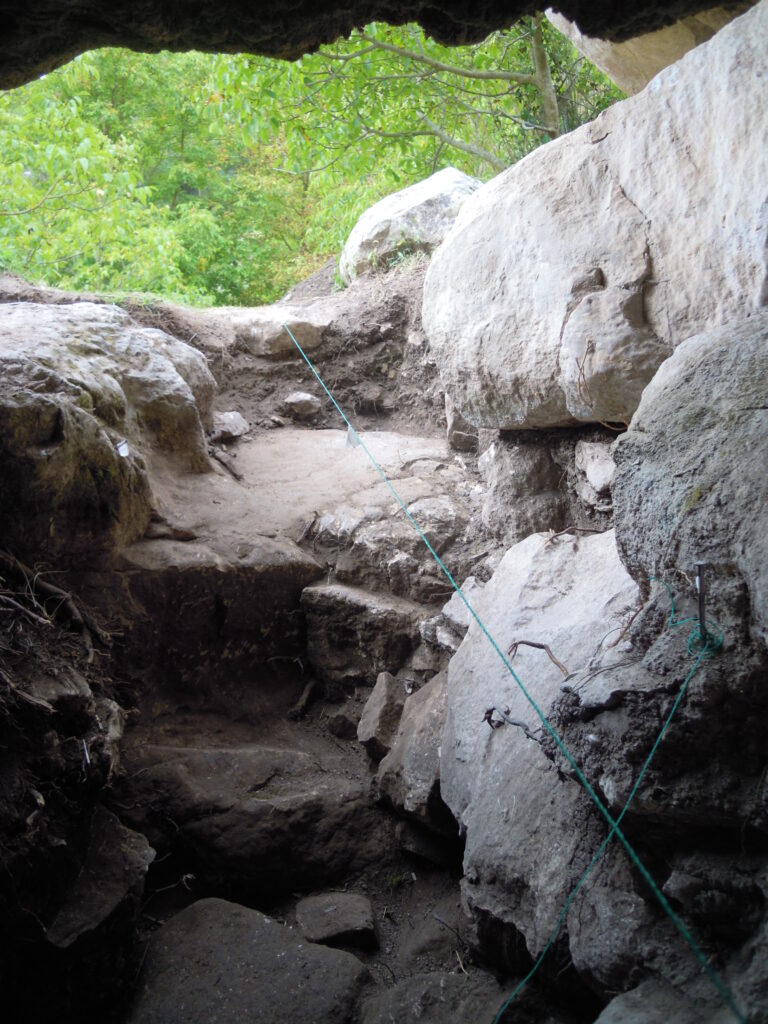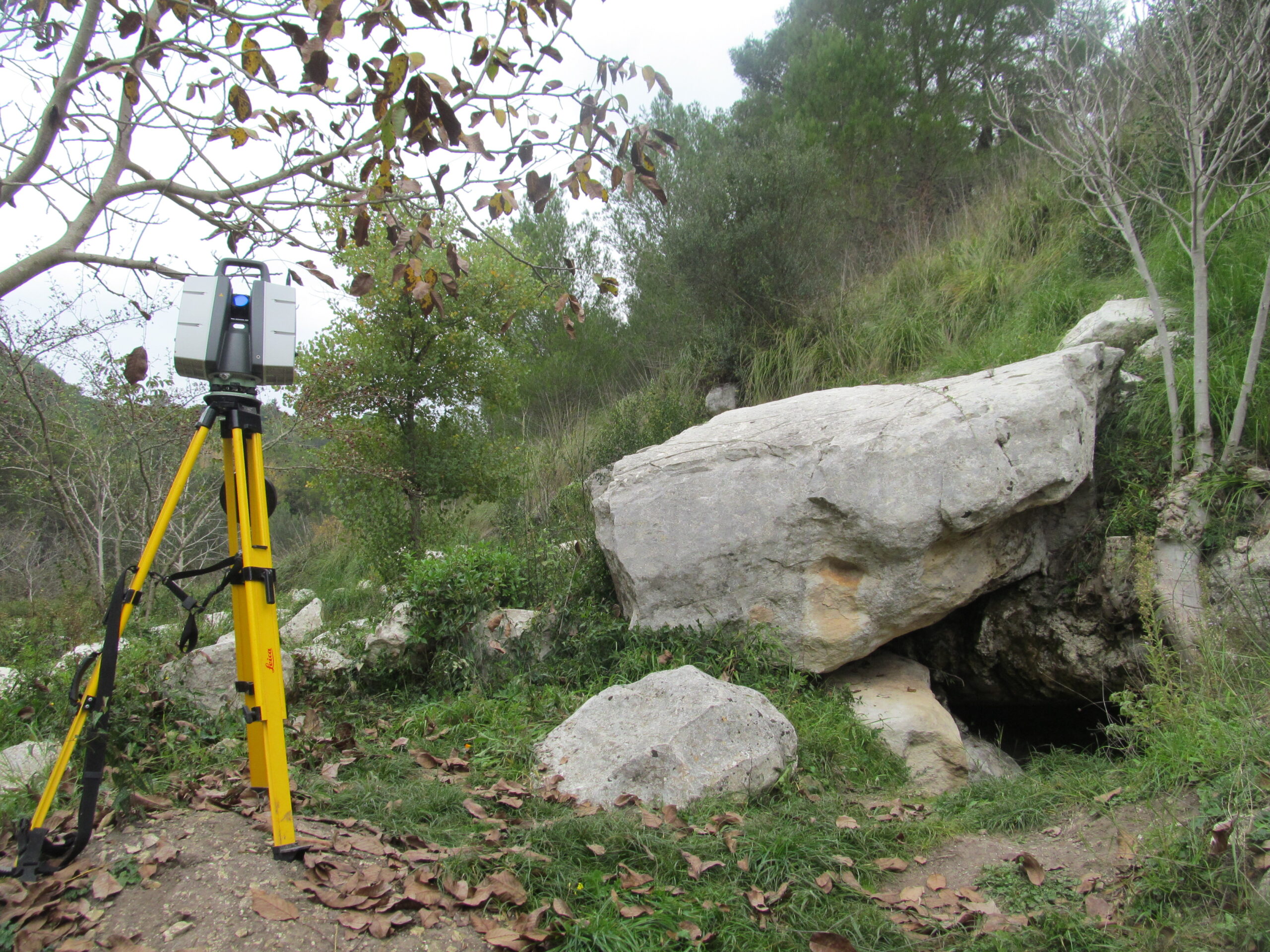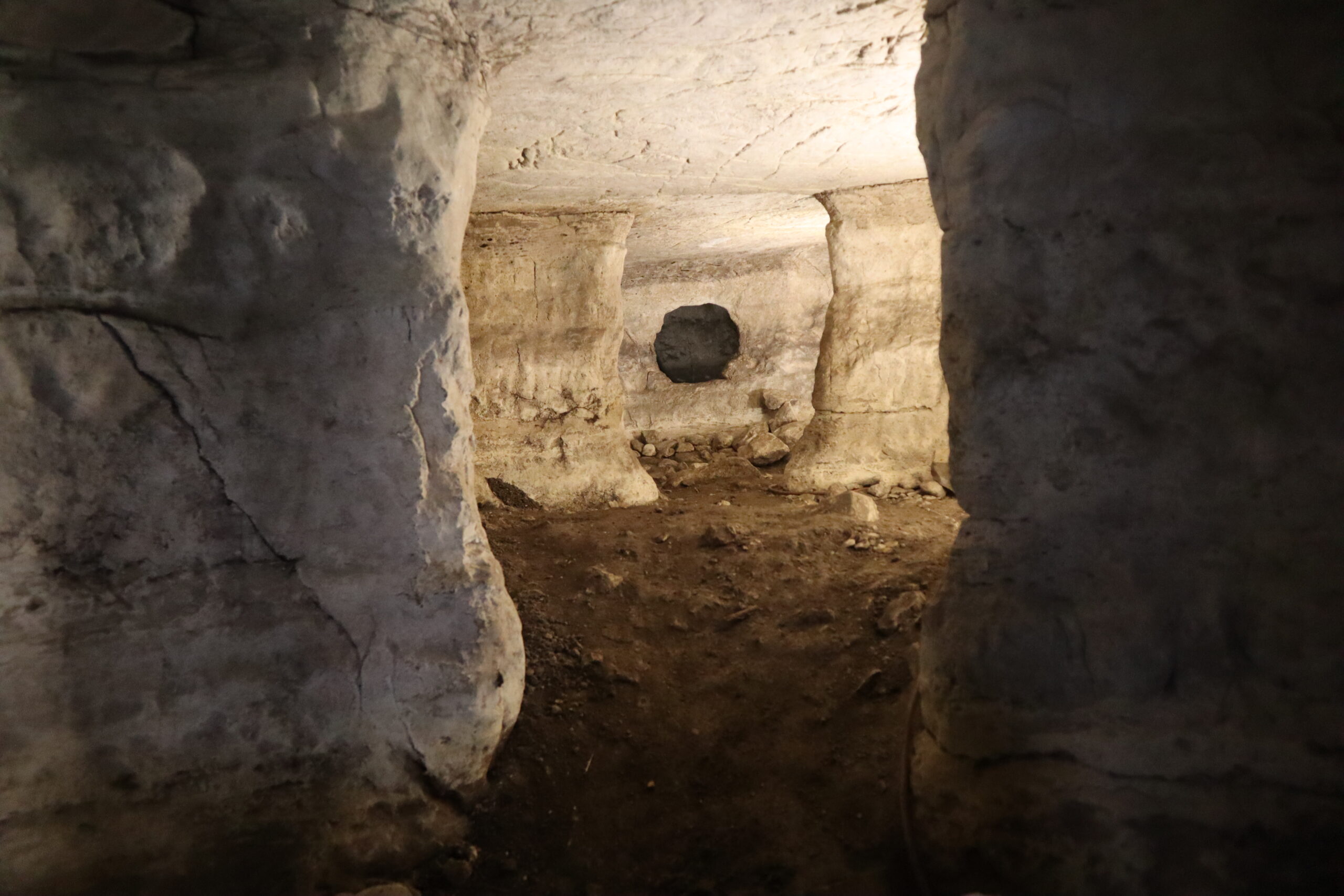Calaforno

Calaforno, Ragusa
BRIEF HISTORY
The Hypogeum of Calaforno is one of the most interesting prehistoric monuments in Sicily, both in terms of its size and its architectural features, and represents a unique example of large-scale multi-cellular rock architecture.
The hypogeum (underground temple or tomb) was dug by exploiting the presence of two banks of limestone: a soft layer of sandy marl, therefore easily removable, in which the rooms were made, and a much harder calcarenite layer, which forms the ceiling. The monument consists of a large entrance hall (about 12×4 m) and 35 roundchambers (1.5 to 3 m in diameter) that form an irregular rocky path about 100 metres long.
The structure was built in the late Copper Age (c. 2700-2500 BC) and continued to be used in the Early and Middle Bronze Age (c. 2200-1250 BC). The original function was funerary, while between 1000 and 700 BC it was probably used as a ritual area, intended for ancestral worship.
After a period of abandonment, it was partially reoccupied as an early Christian cemetery between 300 and 500 A.D., and finally used as a storage area or for sheltering animals (800-1050 A.D.), until its final abandonment.

Hydrogeological risk
The site is of considerable importance and potential for tourism, but is subject to hydraulic problems, due to:
a) to the presence of rising waters inside the hypogeum, worsened by infiltration waters from the overlying limestone plateaus;
b) the torrential nature, sometimes violent, of the neighbouring stream, which has flooded the interior of the hypogeum on several occasions, already in historical times, leading to the blockage of one of the two entrances and which, until 2017, was the cause of the destruction of part of the infrastructures built in the area.
The phenomenon was undoubtedly aggravated by the artificial narrowing of the streambed by the Forestry Department in the 1970s.

RESEARCH OBJECTIVES
Following the latest excavation activities, carried out both by the University of Catania (2013-2017) and by the Soprintendenza BB.CC.AA. (Heritage Superintendency) of Ragusa (2017-2020), a series of changes have occurred that have also had an impact on the abovementionedwater problems. The altered slopes and differences in height must therefore be assessed, taking into account the various conditions to which the hypogeum has been subjected during the various phases of use.
One of the objectives of the project is to protect the hypogeum from these phenomena, to guarantee its use, but also to understand the relationship of the structure with the course of the stream in prehistoric times.
The activities carried out in Calaforno were also undertaken with regard to a second aspect, namely that of increasing the attractiveness of this site and improving its usability. The hypogeum is in fact characterised by the absence of study and tourist facilities, as well as by a series of obvious difficulties of access, linked to its intrinsic characteristics (small underground environment, absence of light, presence of water, etc.).
In order to meet these requirements, a system of innovative movable covers for the access area is also being tested, with light and non-invasive materials and technologies.


RESEARCH GROUPS
- UNICT Team: Digital Survey, Architectural and Construction Design, Archaeological Analysis

SORVEGLIANZA
Soprintendenza BB.CC.AA. di Ragusa – Regione Siciliana
